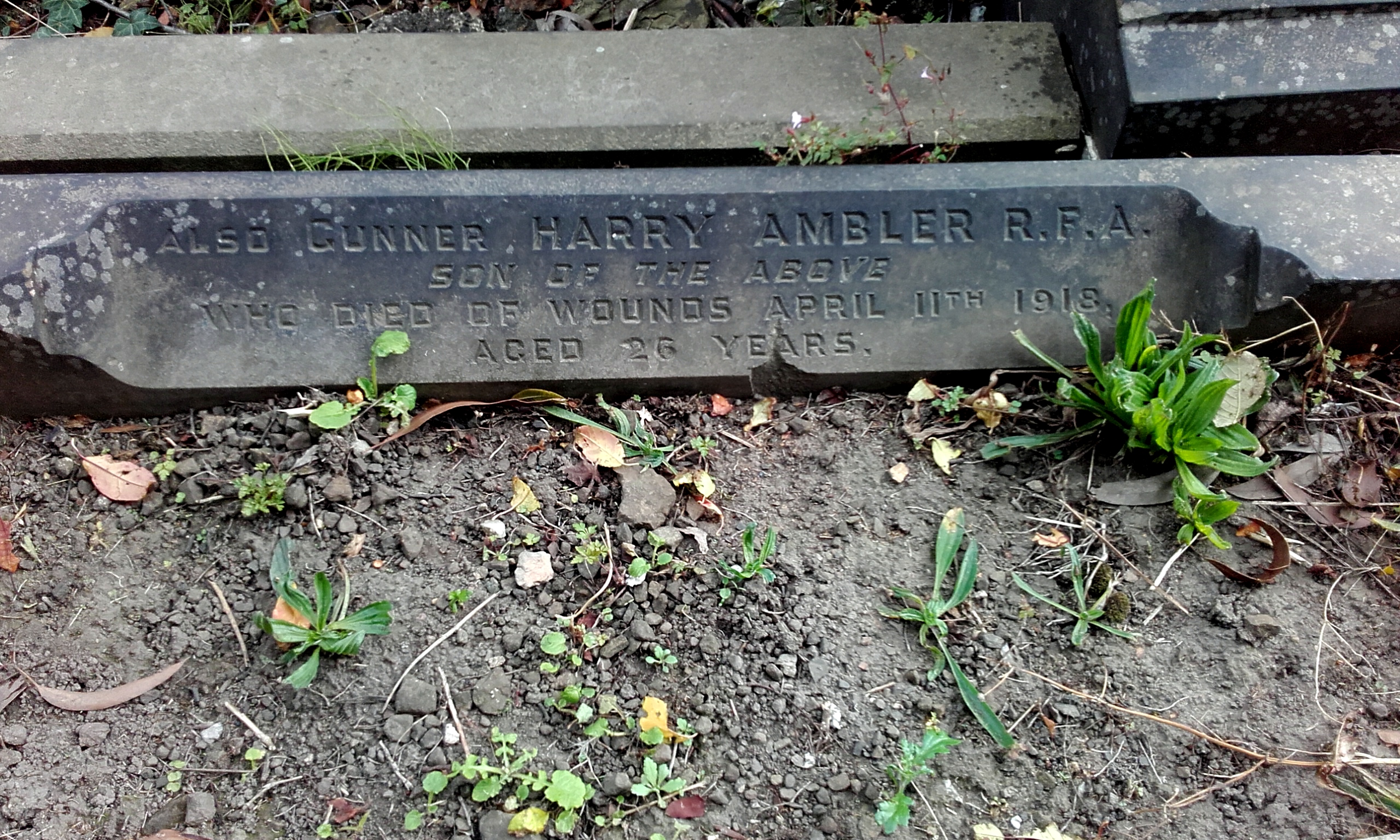
Harry Ambler was born in Ossett in 1892, the son of Alfred and Mary Ambler, who in 1911, were living at Cromwell Cottage, Ossett. Alfred was a rag dyer and Harry was a carter, one of six children. Five of the children were living at Cromwell Cottage in 1911, but 10 years earlier in 1901, the family were living at Mitchell’s Row in Dale Street, Ossett.
Harry Ambler had married Eliza Johnson, who was born in 1892 in the Pontefract Registration District in the December quarter of 1916 and the couple lived in Castleford. There were no children in the brief time they were together, but Eliza Ambler married again in 1919 to Joseph Bennett and had seven children between 1920 and 1933.
Harry Ambler died of wounds, aged 26, on the 11th April 1918 in the Battle of Messines which took place on the 10–11 April 1918. On the 10th of April 1918, the German Fourth Army attacked north of Armentières with four divisions, hitting the British 19th Division, which Harry’s unit was a part of. The Allied Second Army had sent its reserves south to aid the First Army, and the Germans broke through, advancing up to 3 kilometres (1.9 mi) on a 6 kilometres (3.7 mi) front, and capturing Messines. The 25th Division to the south, flanked on both sides, withdrew about 4 kilometres (2.5 mi). By the 11th of April, the British situation was desperate; it was on this day that Douglas Haig issued his famous “Backs to the wall” order.
Sadly, Harry Ambler’s service record has not survived and was destroyed in the Blitz of WW2 on London. The “Ossett Observer” 1 had this short obituary:
“Ossett Gunner Falls – News came to hand yesterday that Gunner Harry Ambler (26), R.F.A., second son of Mr. and Mrs. Alfred Ambler, 111 Dale-street, Ossett, had died from wounds received in action. It is nearly two years since he joined the army, and he had been fifteen months in France. His wife is a Castleford young lady. He was a well-known Ossett teamer.”
Gunner Harry Ambler is buried at grave reference XXVI H8 at Lijssenthoek Military Cemetery 2, near Poperinge, West-Vlaanderen in Belgium. During the First World War, the village of Lijssenthoek was situated on the main communication line between the Allied military bases in the rear and the Ypres battlefields. Close to the Front, but out of the extreme range of most German field artillery, it became a natural place to establish casualty clearing stations. The cemetery was first used by the French 15th Hopital D’Evacuation and in June 1915, it began to be used by casualty clearing stations of the Commonwealth forces.
From April to August 1918, the casualty clearing stations fell back before the German advance and field ambulances (including a French ambulance) took their places.

Commonwealth War Graves Commission Headstone (Photograph courtesy of local historian, Joan Smith)
CWGC heastone photograph courtesy of Mark Smith
References:
1. “Ossett Observer”, 27th April 1918